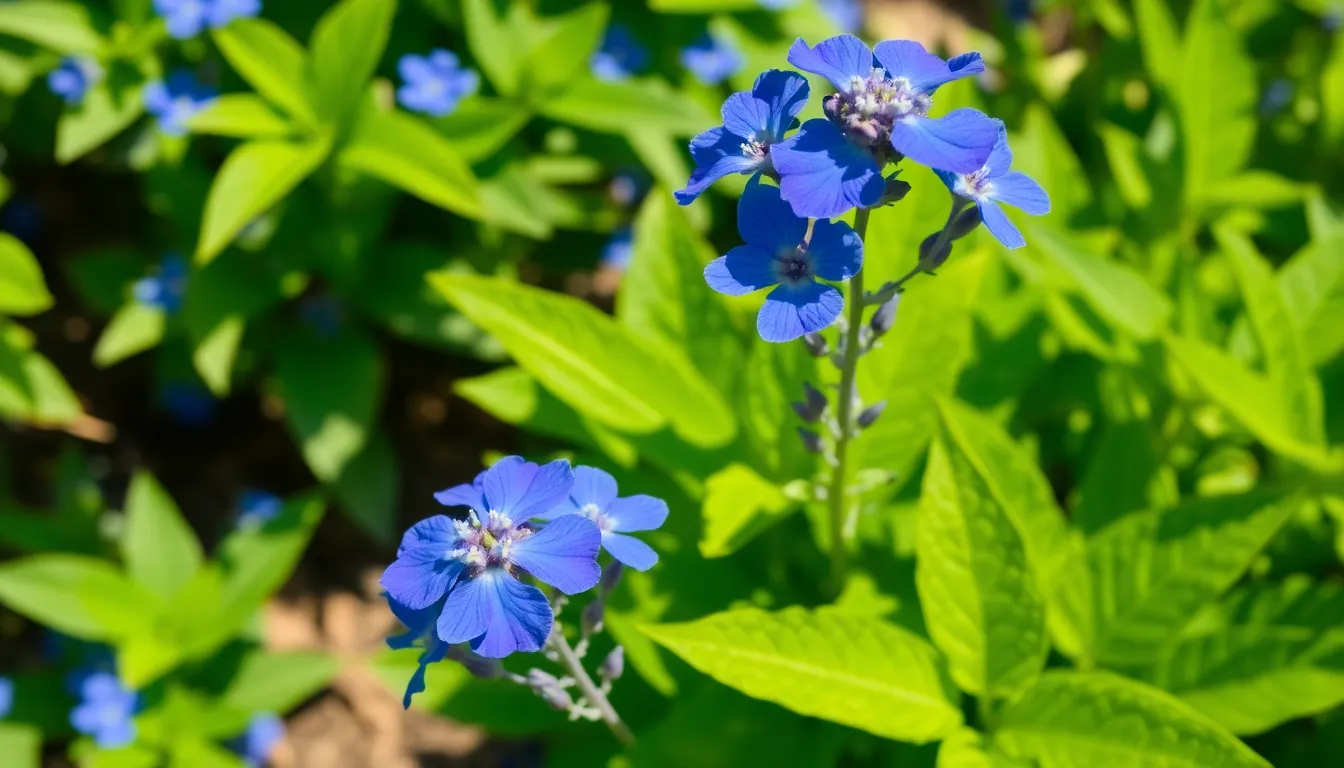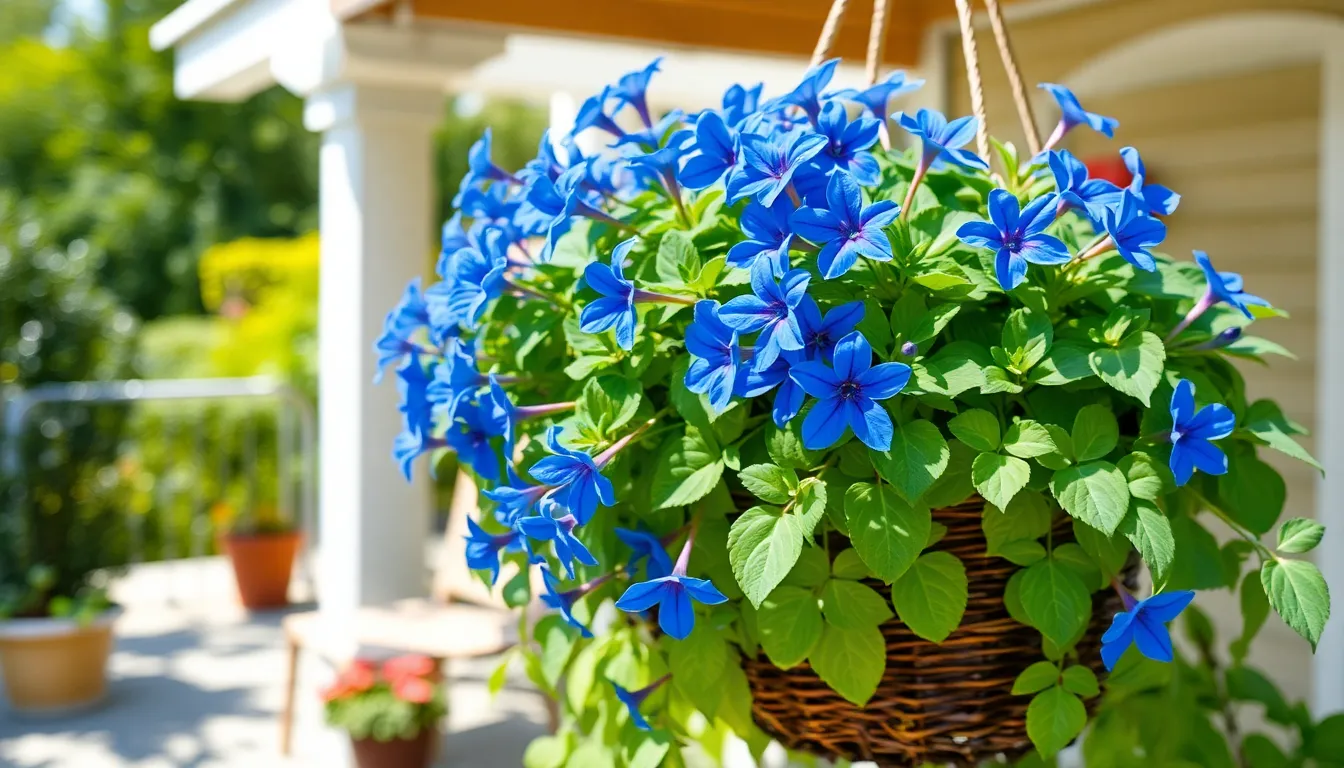If you’re looking to add a splash of color to your garden or patio, the blue daze plant is a showstopper that’s hard to resist. With its vibrant blue flowers and lush green foliage, it’s like the life of the party that never runs out of energy. But don’t let its beauty fool you; this plant has its quirks and requires a bit of TLC to thrive.
Blue Daze Plant Care
The blue daze plant, known for its vivid blue blooms and lush foliage, transforms gardens and patios into vibrant landscapes. This resilient plant thrives in warm climates, making it a popular choice for gardeners.
Characteristics of Blue Daze
Blue daze, or Evolvulus glomeratus, features striking blue flowers that bloom continuously from spring to fall. Its leaves are small, oval-shaped, and possess a silvery-green hue, contributing to the plant’s overall appeal. Sunlight exposure enhances its vibrant coloration, leading to denser growth. Typically, these plants reach heights of 12 to 18 inches and spread up to 2 feet wide. Their trailing growth habit makes them ideal for hanging baskets or cascading over garden edges. The ability to tolerate drought conditions adds to their popularity among gardeners.
Common Varieties
Several common varieties exist within the blue daze family. ‘Blue Daze’ exhibits deep blue flowers with a compact growth habit, making it suitable for smaller spaces. ‘Horizon Blue’ offers a slightly lighter shade of blue and features increased resistance to heat and drought, thriving in challenging conditions. ‘Silver Daze’ presents a unique foliage difference, showcasing silvery leaves paired with blue blooms, enhancing visual contrast in any landscape. These varieties appeal to various gardening preferences and needs, ensuring that gardeners can find the perfect fit for their gardens.
Blue Daze Plant Care

Blue daze plants thrive with proper care, ensuring vibrant blooms throughout the growing season.
Ideal Growing Conditions
Blue daze prefers full sun exposure. It performs best in well-drained soil with consistently warm temperatures. Optimal growth occurs in USDA hardiness zones 9 to 11. It tolerates heat and requires minimal humidity. Container cultivation works well, especially in hanging baskets. Plant spacing should allow for a width of up to 2 feet. Ample air circulation promotes healthy growth and reduces disease risk. Fertilizing every few weeks during the growing season supports blooming.
Watering Requirements
Watering practices significantly affect blue daze vitality. Soil should remain moist but never waterlogged. Allow the top inch of soil to dry before the next watering. Deep watering encourages strong root development. Using a soaker hose prevents unnecessary leaf wetness. Overwatering fosters root rot, so balance is critical. Adjust watering frequency in response to seasonal changes, ensuring consistency during dry periods. Dramatic fluctuations in moisture levels affect overall plant health.
Fertilization Tips
Fertilization plays a crucial role in the growth of blue daze plants. Regular feeding ensures they receive essential nutrients for vibrant blooms and healthy foliage.
Recommended Fertilizers
Balanced fertilizers work best for blue daze plants. Use a slow-release option with an NPK ratio around 14-14-14. Such fertilizers provide nitrogen, phosphorus, and potassium, promoting robust growth. Liquid fertilizers can also be beneficial, especially during the growing season. Dilute liquid options to half strength for optimal results. Organic fertilizers, like compost or well-rotted manure, enhance soil health and support long-term growth while being gentle on the plant.
Frequency of Fertilization
Fertilize blue daze plants every four to six weeks during the active growing season. This timing supports continuous blooming from spring to fall. Reduce or stop fertilizing during the winter months when growth slows. If using slow-release fertilizers, application in early spring suffices for the season. Always monitor plant health and adjust feeding frequency based on growth and blooming activity. Regular evaluation ensures the plant receives optimal care.
Pests and Diseases
Blue daze plants can face challenges from pests and diseases, affecting their health and appearance. Monitoring plants closely helps catch issues early.
Common Pests
Aphids, spider mites, and whiteflies frequently target blue daze plants. Aphids cause curling leaves and stunted growth while spider mites lead to a dusty appearance and yellowing leaves. Whiteflies may produce a sticky residue, indicating their presence. Regular inspection enables prompt identification. Using insecticidal soap or neem oil effectively manages these pests. Maintaining good air circulation around the plants also reduces pest problems.
Disease Management
Fungal diseases like powdery mildew may affect blue daze plants, especially in crowded conditions. Symptoms include white spots on leaves and distorted growth. Providing adequate spacing and air circulation mitigates these issues. Recognizing early signs facilitates prompt treatment. Applying fungicides can help control outbreaks. Additionally, ensuring proper watering prevents root rot, another potential concern. Prioritize well-draining soil to enhance overall health.
Conclusion
Caring for blue daze plants can lead to stunning displays of vibrant blue flowers and lush foliage. With the right conditions and attention to watering and fertilization, gardeners can enjoy these beauties from spring through fall. Regular monitoring for pests and diseases is essential to maintain their health and appearance. By providing ample sunlight and well-drained soil, blue daze plants can thrive in various settings, whether in containers or garden beds. Embracing these care tips ensures that blue daze remains a favorite choice for those looking to enhance their outdoor spaces.

